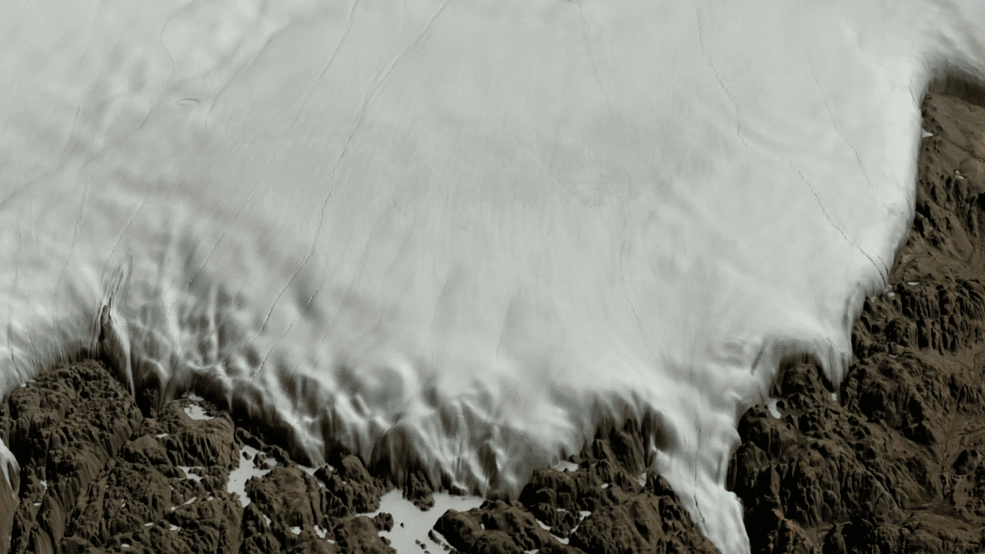Researchers find a huge — and recent — meteorite crater beneath Greenland’s ice sheet
The crater is among the 25 largest ever found — and could be as young as 12,000 years old.

Beneath Greenland’s ice sheet, scientists have discovered, is a near-perfectly round depression created when a big meteorite fell from space and struck the northeastern part of the island.
About 300 meters deep and 31 kilometers wide, the depression is one of the biggest impact craters discovered on Earth — and the first discovered beneath a continental ice sheet.
Results are described in a newly published study in the journal Science Advances and in a NASA video.
The impact crater was discovered almost by accident.
Researchers from NASA have been surveying the region for years with aerial radar to map Greenland’s ice and the bedrock below it. The site, where the Hiawatha Glacier meets the edge of the ice sheet, has long been a curiosity; there, the glacier forms an unusual semi-circle.
Using powerful radar imagery from equipment on a research plane owned by Germany’s Alfred Wegener Institute, an international team of scientists mapped what was below the nearly kilometer-thick layer of ice.
“The crater is exceptionally well-preserved, and that is surprising, because glacier ice is an incredibly efficient erosive agent that would have quickly removed traces of the impact. But that means the crater must be rather young from a geological perspective,” Kurt H. Kjær from the Natural History Museum of Denmark and the study’s lead author, said in a statement released by the University of Alaska Fairbanks.
The impact crater, which is bigger than the city of Paris, appears to be young by geologic standards. Clues in the glacial ice and in the rocks found in the area suggest that the meteorite hit sometime during the Pleistocene era, possibly as recently as 12,000 years ago. If the impact was that recent, it would have affected human populations, the scientists said. Even if it happened earlier, there would have been widespread effects, they said.
“Regardless of its exact age, based on the size of the Hiawatha impact crater, this impact very likely had significant environmental consequences in the Northern Hemisphere and possibly globally,” the study says.
Just how thick the ice was when the meteorite struck depends on the timing, said Mark Fahnestock of UAF’s Geophysical Institute, a co-author of the study. If the impact was 12,000 years ago, “there would have been more ice in this area than at present — the edge of the ice sheet was out in the ocean or across the strait and on to Ellesmere Island,” he said in an email. But at other times, the setting would have been much different, he said. “There are times in the last 2.4 million years when it was warmer in this area, based on the vegetation that was there, and likely no ice,” he said.
The meteorite itself can no longer be found, Fahnestock said.
“In an impact of this size the large impactor would have disintegrated, and you wouldn’t expect to find it, but you would find a chemical signature in the debris, which could help to identify its composition,” he said. “The sediment sample that has the shocked quartz grains and other impact-related grains also has a signature that supports the impactor being made of iron.
A large collection of iron meteorites has already been found in this part of Greenland, and Greenlanders for hundreds of years have used those meteorites as a source of iron to put on spears and tools, Fahnestock noted in the UAF statement.
The Greenland impact crater is one of the 25 largest found on the planet, the scientists said.
Yereth Rosen is a 2018 Alicia Patterson Foundation fellow.